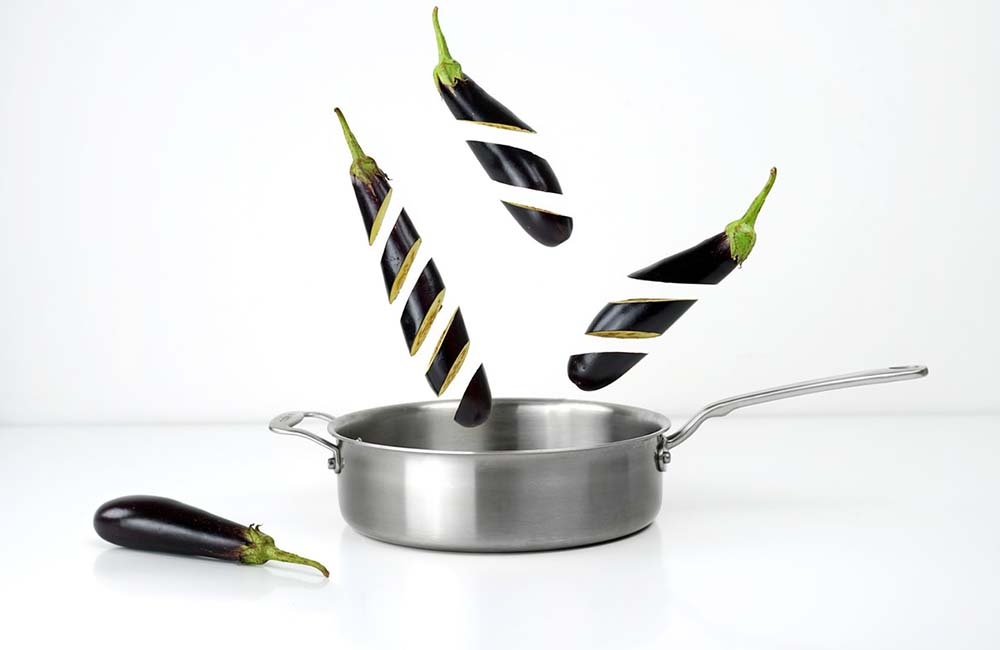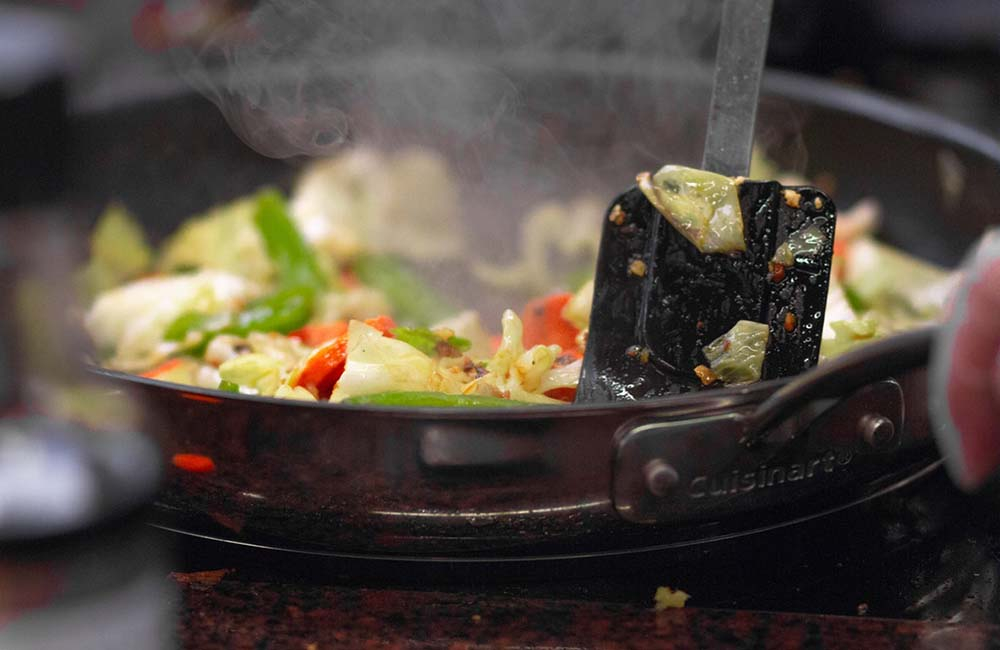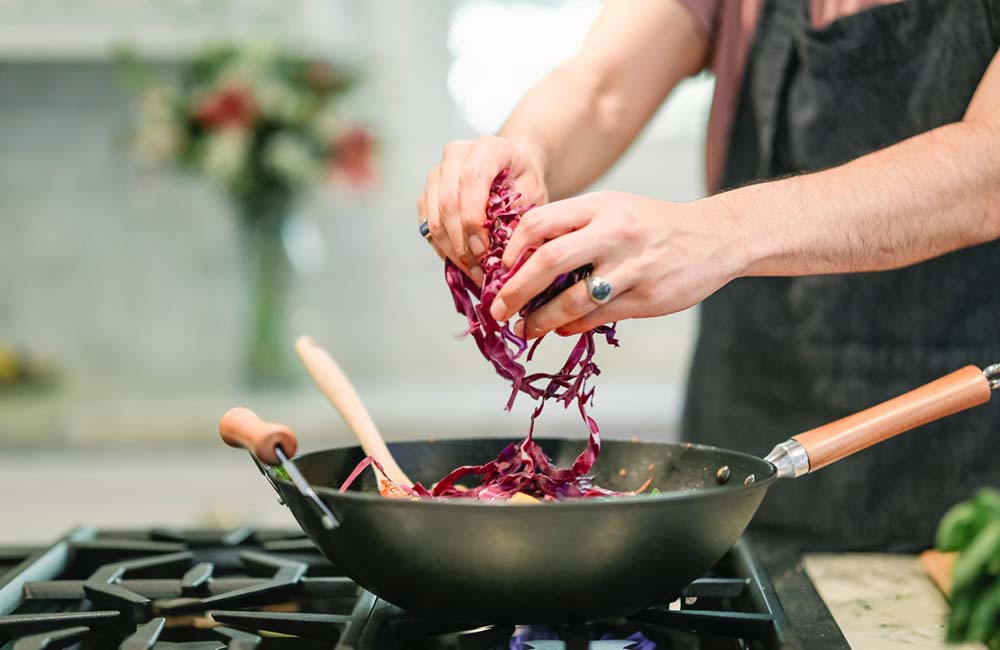It’s finally time to upgrade the cookware in your restaurant kitchen, but you’re not sure which kind to buy or what you’ll need. Consulting with your chef is a good place to start, but even if you know which pieces you need, you may not know which material is best.
Ultimately, the right choice for your restaurant will depend on what you’re cooking. We’re going to cover the most common and best types of cooking pans so that you can make an informed decision when choosing your cookware.

What are the Most Common Cooking Pan Types?
Restaurants have several different types of cooking pans and different pan sizes, including:
Fry Pan
Frying pans, or skillets, are essential to any restaurant kitchen. Thanks to their flat bottom and rounded sides, skillets cook food quickly – ideal for busy kitchens. Skillets come in a variety of pan sizes, but they typically do not come with lids.
Consult with your chef to ensure that you have enough skillets and the right sizes to meet your kitchen’s needs.
Saucepan
Another essential food pan, sauce pans have rounded bottoms and tall, straight sides. They’re a versatile piece of cookware and ideal for cooking soups and sauces. Their lids also allow for greater control over evaporation.
Consider your menu when choosing your saucepan size. You'll probably need a few of these pans in a variety of sizes.
Sauté Pan
The sauté pan is just as essential as a skillet, and their designs are similar. They both have flat bottoms (although sauté pans tend to be a heavy bottomed pan), but rather than having rounded sides, sauté pans have straight sides.
They're deeper than frying pans and can be used for a variety of tasks, from deep frying to searing, sautéing and preparing some sauces.
Griddle
If your restaurant serves breakfast and you don’t have a range with a built-in griddle, you'll likely need a griddle pan. This kitchen pan has a large, flat cooking surface, making it ideal for preparing pancakes, eggs, hash browns and other breakfast foods.
You’ll find both square and round varieties as well as those with ridged surfaces that create grill marks.

Food Pans
Food pans are used in virtually every stage of the food preparation and presentation process. From salad and hot bars to sandwich preparation and catering, food pans are essential to every kitchen.
There are many different food pan sizes, but full size pans are the standard in the food service industry. These pans measure 20-3/4" x 12-3/4." All other sizes are just a variation of these dimensions.
-
2/3
-
1/2 long
-
1/2
-
1/3
-
1/4
-
1/6
-
1/8
-
1/9
If your restaurant caters, there are catering pan sizes that will accommodate larger servings of food.
Your restaurant will need a variety of food service pans in different sizes. But size isn’t the only thing you’ll need to consider. You’ll also need to think about depth and capacity.
The most common depths are: 6”, 4” and 2-1/2," but you’ll also find additional depths of:
-
2-3/4"
-
8”
-
4-1/2"
-
1-1/2"
-
1-1/4"
The large, 8” pans are usually large plastic pans designed for fresh, cold ingredients. Like any other type of cookware, food pans come in a variety of materials.
You’ll also find specialty pans available, including perforated options and those with non-stick surfaces. Some have decorative designs or anti-jam stacking features that save on space when storing food.
In addition to the array of sizes, capacities and depths, you’ll also find a wide range of lid types and covers available to meet your needs, including:
-
Dome Covers: Protect foods while offering an elegant look.
-
Flip Top Lids: Flip upward for easy access to the contents without having to remove the lid.
-
Notched Lids: Allows for serving utensils to be stored inside the pan while the lid is on.
-
Handled Covers: Handled covers are easy to remove and allow for quick access to the food inside of the pan.
-
Roll Top Covers: Helps to maintain food temperatures while allowing easy access to the pan’s contents.

What’s the Best Material for Professional Cooking Pans?
Finding the right types of pans for cooking is just the start. You'll also need to consider materials. We're going to cover the most common materials and their benefits for both cookware and food pans.
Carbon-Steel
A carbon-steel skillet is largely considered one of the best pans for cooking. The material sears like cast iron, has a slick surface like a non-stick pan, and performs like stainless steel tri-ply.
Carbon-steel pans are some of the best pans to cook in because the material heats virtually as evenly as stainless steel tri-ply.
Stainless Steel
Stainless steel is one of the most popular choices for restaurant cookware and food pans. It's a durable material that comes at an economical price, although it will take a little longer to heat up.
Stainless steel is:
-
Easy to clean
-
Resistant to warping and denting
-
Not very reactive, so acidic foods maintain their color and taste
It’s also one of the most popular choices for food pans. Stainless steel food pans can go from the freezer to oven, refrigerated or even steam tables without a hitch. And because the material doesn’t alter the flavor of foods, stainless steel is the go-to option for serving pans.
Copper
Although not as common as it once was, copper is still favored by many classically-trained chefs because of its superior heat conduction. It heats and cools quickly, which makes it ideal for dishes that require precision temperature control.
That being said, copper does require diligent maintenance to maintain its aesthetic appeal, and it comes at a significantly higher price than other material options. These high end cooking pans are usually only reserved for fine dining restaurants.
Aluminum
Aluminum is still the most popular cookware material in the restaurant industry. It’s affordable, it heats and cools quickly, and it transfers heat quickly. Because it’s soft and porous, aluminum pans can transfer flavor between dishes and be stained by acidic foods.
Clad
Clad combines two materials to get the benefits of both. Typically, clad pans are a combination of aluminum and stainless steel. The aluminum offers excellent heat conductivity, while stainless steel prevents corrosion and is easy to maintain. The only drawback with clad pans is that they’re heavy and expensive.
Professional cooking pans are worth every penny, but it’s important to make your investment wisely. Consult with your chef to ensure that you’re meeting the needs of your cooks without overspending on unnecessary pans.


